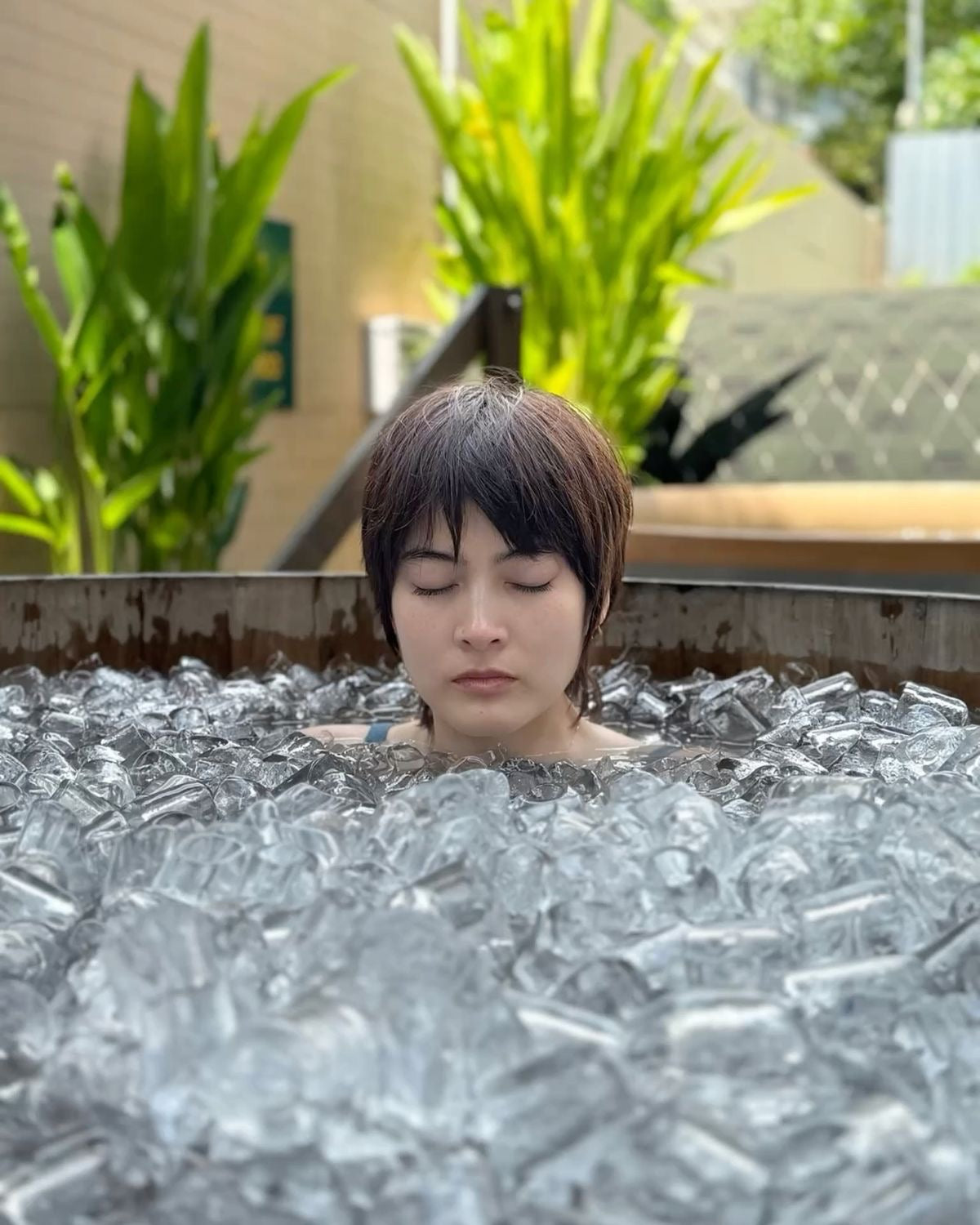Feeling brave enough to sit in a freezing Ice Bath Tub? You're not alone. But are ice baths and Cold Plunge Tubs actually backed by science—or just trendy torture? Short answer: yes, partially. Keep reading to find out what’s fact, what’s hype, and what your muscles really need!

The Core Science: How Cold Affects the Body
The Cold Shock Response
When you immerse yourself in cold water, the body experiences a rapid drop in skin temperature. This triggers the cold shock response, which includes gasping, increased heart rate, and rapid breathing.
It’s a survival mechanism—but it also sets the stage for the physical benefits that follow.
Vasoconstriction and Blood Flow Regulation
Cold temperatures cause blood vessels to constrict (vasoconstriction), which redirects blood from the skin to the core.
Once you rewarm, blood flow surges back to the extremities—helping flush out metabolic waste and aiding recovery.
Hormonal and Neurological Responses (e.g., dopamine, noradrenaline)
Cold immersion can stimulate a spike in noradrenaline and dopamine, improving focus and potentially boosting mood.
This chemical response can mimic the effects of mild antidepressants and may play a role in cold therapy's mental health claims.
Documented Benefits: What Research Supports
Muscle Recovery and Reduced Soreness
Studies have shown that cold water immersion can reduce delayed onset muscle soreness (DOMS), particularly when used within 48 hours of intense exercise.
Athletes often report quicker bounce-back between sessions when incorporating ice baths into recovery routines.
Mitigating Inflammation and Swelling
Cold therapy helps manage inflammation by constricting blood flow to damaged tissues.
This can limit swelling and reduce tissue breakdown in the early stages post-injury or intense training.
Mental Well-being and Mood Improvement
Dopamine release during cold plunges may contribute to improved mood and mental clarity.
Some individuals report a natural "high" after exposure, along with reduced anxiety levels.
Potential Immune System Boost
Though evidence is still emerging, some research suggests regular cold exposure might increase white blood cell count and improve resistance to illness.
These effects are modest but promising.
Metabolic Effects and Brown Fat Activation
Cold exposure activates brown adipose tissue (brown fat), which burns calories to generate heat.
This could support metabolic function and weight management, especially when done consistently.
Improved Sleep Quality
Many people claim better sleep after a cold plunge session. One theory is that the post-immersion parasympathetic rebound promotes relaxation and deeper rest.
While this hasn’t been conclusively proven, anecdotal evidence is strong.
Nuances and Limitations in Research
Conflicting Evidence on Performance Gains and Muscle Growth
Cold therapy may dampen muscle hypertrophy when used immediately after resistance training.
This has led some experts to advise against cold plunging right after strength workouts.
Short-term vs. Long-term Effects
Most benefits are seen in the short term—improved soreness, mood, and focus.
Long-term effects (like metabolic changes or immune gains) are still under investigation.
Athlete vs. General Population Studies
Much of the current research is centred on elite athletes, which may not apply directly to everyday users.
General population responses may vary widely.
The Role of the Placebo Effect and Anecdotal Evidence
Some benefits might be psychological. Believing the plunge works may enhance perceived outcomes.
Nonetheless, the placebo effect still contributes to better overall well-being for many.
Navigating Ice Baths: Risks, Considerations, and Best Practices


Who Should Exercise Caution or Avoid Ice Baths?
Cardiovascular Concerns (e.g., heart conditions, high blood pressure)
Cold exposure can raise blood pressure and stress the heart.
Anyone with cardiovascular issues should consult a healthcare provider before plunging in.
Other Pre-existing Health Conditions (e.g., diabetes, poor circulation, neurological disorders)
People with diabetes or poor circulation may face complications like numbness or slower healing.
Cold water may also worsen symptoms in those with neurological issues.
Risks of Cold Shock and Hypothermia
Sudden immersion in icy water can cause breathing issues or disorientation.
Staying too long increases the risk of hypothermia and should be avoided.
Safe Immersion: Tips for Your Cold Plunge
Optimal Temperature Guidelines (e.g., 10–15°C)
Most experts suggest cold plunges between 10–15°C for safe and effective exposure.
Cooler temperatures are not always better—it's about what your body can handle.
Recommended Duration
Start with 1–3 minutes and gradually increase based on tolerance.
Avoid exceeding 10–15 minutes without proper monitoring.
Gradual Entry and Breathing Techniques
Ease in slowly to avoid shock, and focus on calm, deep breathing.
This helps regulate your response and maintain control.
Strategic Use for Training and Recovery
Use cold plunges strategically—after cardio or rest days rather than directly post-weightlifting.
This preserves training adaptations while aiding recovery.
When to Seek Medical Advice
If you feel faint, disoriented, or have any existing health concerns, consult a professional.
Never plunge alone and always prepare towels and warm clothes post-session.
Conclusion
Ice baths, Cold Plunge Tubs, and Ice Bath Tubs aren't just wellness fads—they have real, science-backed benefits. From muscle recovery and mood boosts to better sleep and possible immune perks, cold water immersion holds plenty of promise.
That said, the research is still evolving. Not all benefits are equally proven, and individual responses vary.
When done safely, ice baths can be a powerful addition to your wellness routine.
Takeaways
-
Cold plunges reduce muscle soreness and speed recovery.
-
Cold therapy may boost mood, sleep, and immune function.
-
Some benefits are still being studied—results vary.
-
Be cautious if you have health issues—consult your GP.
-
Start slow, stay safe, and plunge smart!






